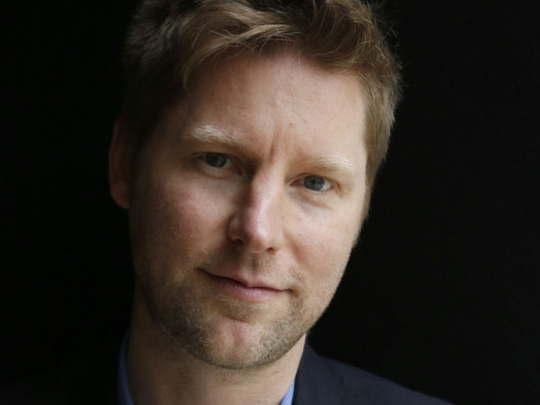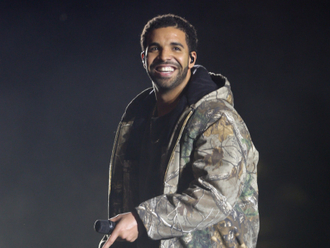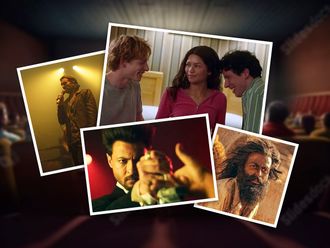
It is the winter of 2000 and Rose Marie Bravo is sitting alone at the back of Milan’s Grand Hotel awaiting the arrival of a 29-year-old Yorkshireman.
The then boss of the British luxury fashion label Burberry had just begun her search for a new designer and had been alerted to a little-known talent working for Tom Ford at Gucci. His name was Christopher Bailey.
Suddenly, her candidate appeared, strolling into the hotel wearing jeans, a blazer and a white shirt — his skinny frame making him look “about 19, never mind 29”.
“He was so slight of build. Cute. I thought my goodness,” gushes Bravo. “When I saw him coming to me, before he even said a word, I said to myself ‘he’s the guy.’ It sounds crazy to repeat it. I could never lose that sense that he was right. I felt very silly.”
As everyone in fashion knows, Bailey was hired as Burberry’s new designer — but Bravo says she forced herself to interview 30 other candidates, put in front of her by the fashion headhunter Floriane de Saint Pierre, so she could justify her hunch to the board of directors.
Smooth progress
Bailey’s Burberry career progressed just as smoothly following that moment too, with Bravo handing him more and more responsibility, including the company’s marketing brief. Under her successor, Angela Ahrendts, the Halifax-born son of a carpenter and a window-dresser for Marks & Spencer saw his role widen further, with responsibility for designing the fashion group’s stores and even its new corporate headquarters.
When Ahrendts announced she was moving to Apple last year, Burberry’s chairman, Sir John Peace, didn’t even seek a Bravo-style alibi by hiring a headhunter for cover. Instead, he simply handed Bailey the top job at the £6 billion (Dh37.7 billion) company.
And that’s when Bailey’s serene rise suddenly started to experience some turbulence. He attended his first annual general meeting as the group’s chief executive on Friday, which was most notable for a row over a rather large Burberry cheque — with more than 50 per cent of investors voting against the company’s remuneration report. Investors are furious about the nearly £20m of free shares handed to Bailey over the last four years, which they don’t think have been adequately explained.
Almost as irksome has been a £440,000 cash allowance — separate from Bailey’s £1.1m salary and potential £2.2m bonus plus an additional one-off performance related award of £7.6m worth of shares when he took over as chief executive in May. These came on top of the £3.8m worth of Burberry stock he already owns, according to the company’s share register.
The criticism over his pay has irritated the rookie chief executive — especially the suggestion that the company has been less than transparent and the fact that his neighbours in Yorkshire might now know how much he is worth. But the row has posed two questions for City investors: who exactly is this £20m genius and is he worth it?
Impressing Donna Karan
Bailey was plucked from the Royal College of Art by the American designer Donna Karan, who was so taken with his work that she stripped naked in front of him to try on his collection. Supposedly, that was three minutes after meeting him.
Bailey then switched from Karan’s New York base to Milan to design for Ford at Gucci and then back to London to create for Bravo at Burberry.
Few doubt Bailey has been a major contributor to the resurgence of the old brand, whose image he linked fastidiously to its British roots — particularly its association with the British weather — while modernising the company with an aggressive push towards the digital age.
As his star rose, so did his salary, and Burberry insists that, aside from the one-off award of shares, Bailey’s pay package has not changed since he added the chief executive title to his chief creative role. The headhunter Saint Pierre adds: “When I see the fees that are paid to creative directors in the industry — and the Burberry figure includes Christopher’s remuneration as a CEO — I say ‘my God, Burberry is getting a bargain!’”.
Maybe. City analysts still fret that Bailey has either taken on too much or is an unproven chief executive. But outside the Square Mile, he is defended and lauded.
Lavish praise
Old colleagues, including Bravo, Karan, and the former Burberry finance director Stacey Cartwright, are gushing in their praise for his abilities and leadership qualities. Bailey is intensely private (he declined to speak to the Guardian), but his allies insist that he is ruthless in focusing his time, devoid of ego and has a sharp commercial mind, while his talent and consideration for others engender loyalty.
One fashion source, who knows Bailey but who works for a much larger rival, says: “He worries he’s been over-hyped, which might make him a hostage to fortune. But with a competitor’s hat on, we rate him. He’s making the transition to chief executive very well. And I’m sorry I can’t really dish the dirt, because there ain’t any.”
Still, for those in the City who agonise that Bailey might not fully understand a balance sheet, there is evidence to suggest that he has moments of financial cunning that would make a banker proud.
Last October, Bailey sold his four-bedroom Chelsea home for £7.3 million, after buying it for £4.8 million four years earlier and conducting extensive renovations. Six months later, a similar property on the same side of the road went for £850,000 less.
He also appears hard-nosed enough to have invested in a controversial investment scheme called Invicta Film Partnership No23 LLP that can help defer personal taxation — which might prove an awkward conversation topic when Bailey hooks up with Rupert Harrison, who apart from being a friend is the chief economic adviser to the chancellor, George Osborne. One ally of Bailey’s insists he was motivated to join the scheme in order to invest in the film industry, rather than as a method of deferring tax.
Ordinary life
Even so, friends say Bailey lives a relatively ordinary life, considering his job and the one done by his husband, the actor Simon Woods, whom he married in a small ceremony in Chelsea in 2012. Bailey and Woods, who played Octavian in the television series Rome and starred in Pride & Prejudice with Keira Knightley, have a house in London and count the likes of Sienna Miller, Mario Testino and Chelsea Clinton as friends. Bailey designed Marc Mezvinsky’s wedding suit when he married Clinton in 2010.
Yet, when Burberry’s offices shut for a half-day every Friday during the summer, Bailey immediately flees this glamorous existence by boarding the train to Yorkshire, where the couple own another house. There, he is trying to learn how to repair the property’s stone walls — a task he has long said he would have done professionally had he not been a designer.
That fits with his understated image, albeit one that fails to impress some in London. One social acquaintance snipes: “He’s bland, which is why it has always astounded me he is so creative”, while another says of the designer: “There’s no aura.”
Up to a point. Fourteen years ago in Milan, Bravo clearly disagreed.









